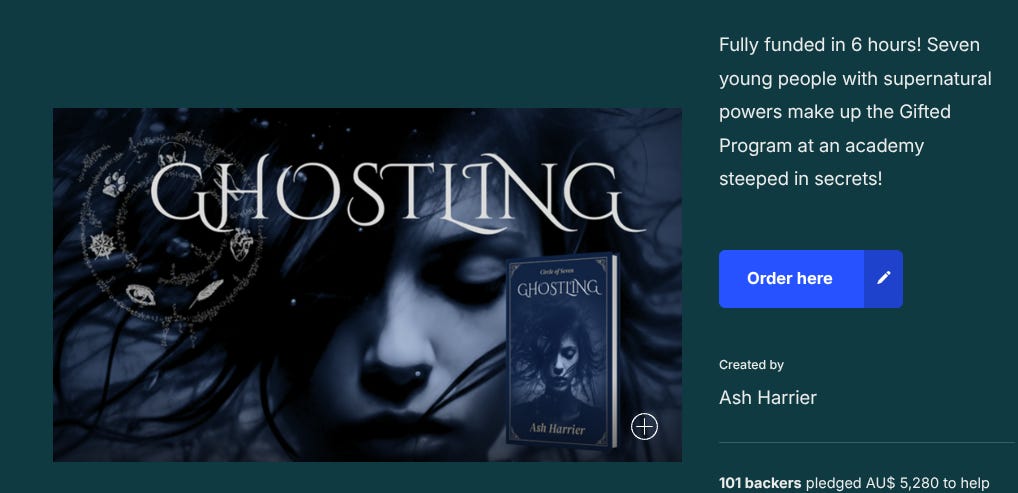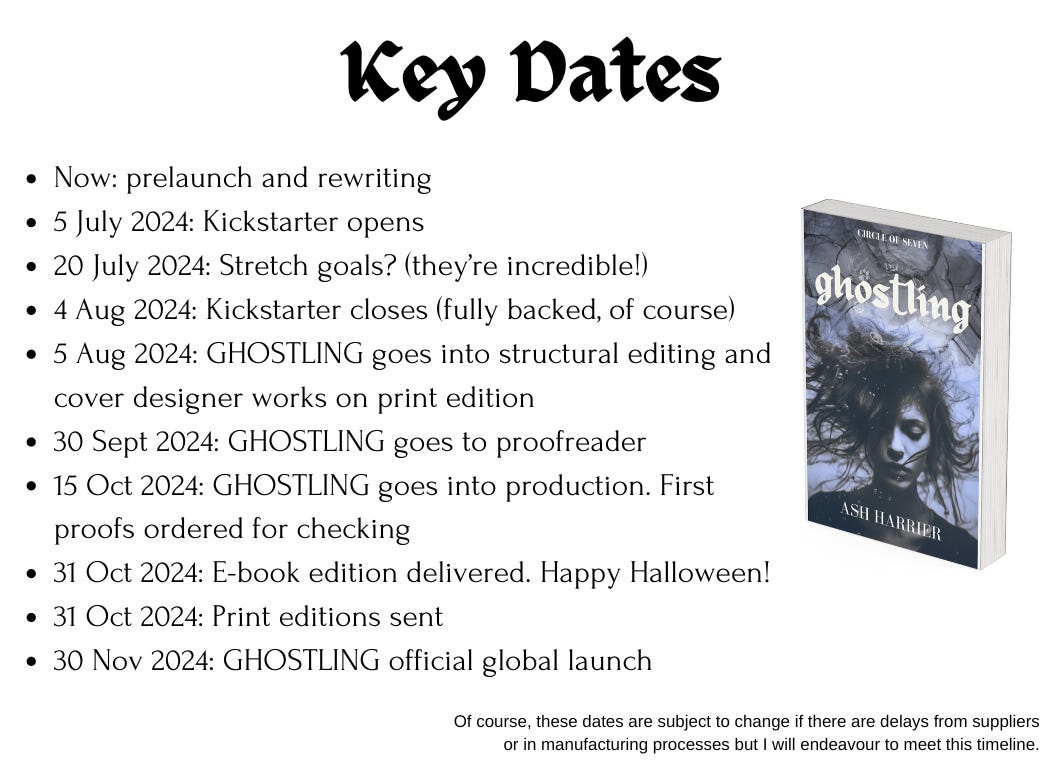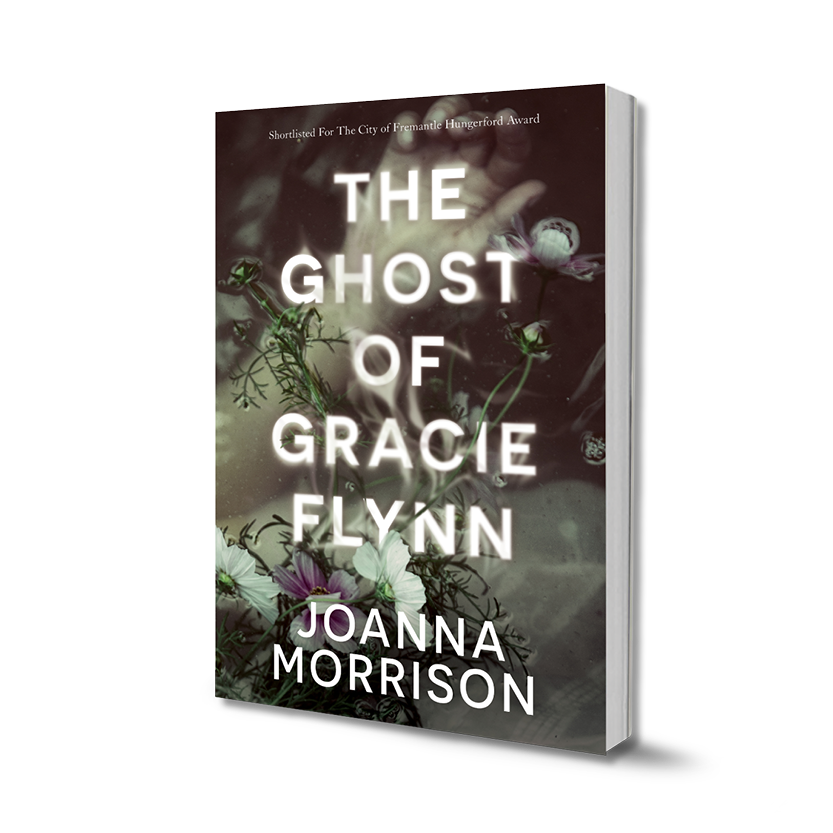Writers are doing it for themselves
Sasha Wasley answers my questions about using Kickstarter to self-publish a novel (or three).
Traditional publishing is not only notoriously difficult to break into, but it moves at a glacial pace. So with self-publishing (aka indie-publishing) options becoming ever more viable and accessible, it makes sense that authors today are considering this path. Especially since several household names have launched their careers this way, according to this article in the Guardian:
The romance author Colleen Hoover built her audience through self-publishing and has now sold around 20 million books. Sarah J Maas, the world’s bestselling author in 2024, started publishing her Romantasy fiction on FictionPress.com when she was 16. Freida McFadden, the hugely successful psychological thriller writer, claims to make 60% of her income via KDP and has continued to self-publish even as mainstream publishers seek her out.
Interestingly, this is not a new phenomenon. One of Australia’s first bestselling crime novels — The Mystery of a Hansom Cab by Fergus Hume — went from rejected & self-published to phenomenal global hit in 1886, “selling hundreds of thousands of copies around the world and being translated into eleven languages,” according to Text Publishing. (Text published the book in 2006 and 2012.)
With success stories like that in mind, going indie is a seductive prospect. But indie-publishing is no walk in the park. While royalties are generally more substantial, the author wears all the risks and costs of editing, proofreading, typesetting, cover-designing, marketing, and distribution. Pre-production costs are enormous because each step requires the skills of a talented freelance practitioner who will spend many hours playing their part. The risk of being duped is also a consideration since it can be difficult to separate the wheat from the chaff when it comes to freelance designers and editors. All of which is to say, indie-publishing is demanding, daunting, and costly.
Enter crowdfunding, an online process whereby authors and other creatives use online platforms to secure patrons to fund their projects. There are many options out there, but arguably the most well-known is Kickstarter, a New York-based platform where members of the public can pledge varying amounts of money in exchange for a tiered selection of items or rewards, designed and produced by the author/creative. These might include things like bookmarks, special editions with hard covers or sprayed edges, novelty stickers, autographs, extra chapters or graphics. At the time of writing, the Kickstarter stats on their website are:
$8,809,912,676 pledged to Kickstarter projects
279,191 successfully funded projects, and
24,228,620 total backers.
Big numbers! My guest author today, Perth writer Sasha Wasley, created a Kickstarter campaign last year in order to revamp and self-publish her YA novel, Ghostling, after the publishing rights reverted to her in 2024.
This year, Sasha will release books two and three in the series, under new titles and with fresh covers, so she is just about to launch another Kickstarter campaign to help bring the full trilogy into the world as a boxed set. Sasha very kindly answered all my questions about this experience, so if you’re considering the crowdfunded indie-publishing option, or just curious about it, read on!
Author Bio
Sasha Wasley is a Perth/Boorloo writer. She holds a PhD in feminist literature and loves nature, Jane Austen and puns. She also loves the Australian environment and has a fascination with animals, trees and our extraordinary wild landscape. As an advocate for literacy, Sasha offers mentoring services and runs writing workshops for children and adults. She is a WA Ambassador for Books in Homes Australia, a charity promoting early book ownership for life success. She lives in the Perth hills region with her partner and two adult children, surrounded by dogs, cats and chickens, as well as a rabbit, a frog and a family of wild quendas. She is grateful to live and write on unceded Whadjuk Noongar land. Sasha writes as Ash Harrier for the YA/Fantasy market, and Sasha Wasley for the adult contemporary market.
Interview
I was so impressed with your Kickstarter campaign for Ghostling last year, Sasha. Let’s start with a bit of background on the trilogy we’re talking about today: your YA supernatural dark academia novels Ghostling, Darkling and Deathling (new titles). When were they originally published and who published them?
Thank you! I got my first book deal with a small digital press, Evernight Teen, based in Canada, in 2014. I wrote three books in a trilogy: The Seventh (2015), The Rift (2015) and The Deluge (2020).
Ghostling, Darkling and Deathling together form the Circle of Seven trilogy. Can you give us the elevator pitch for the collection?
Forbidden love, found family and psychic powers!
Mimi has imaginary friends – except they’re not imaginary. She’s the girl with the ghosts and she’s been keeping them a secret for years. When she starts at her new boarding school and is recruited for a gifted program, her secret is blown wide open.
At an academy steeped in secrets, the seven members of the gifted program must learn to wield their supernatural gifts and escape the attention of a cloaked society that wants their powers and is prepared to kill for them.
When did you get your rights back? Can you explain what that means and why it happens?
My contracts for the trilogy included five-year ‘rights reversion’ clauses. Most book contracts have this clause, although it’s more conventionally ten years in the publishing industry. Smaller presses sometimes have shorter periods. What it means is you can effectively end your contract with the publisher. They will remove your book from the market (secondhand copies will remain out there) and you can either retire the title or do what you like with the IP. I rebranded, rewrote and republished!
Side note: I did this, not because I love self publishing (it’s not easy!), but because most publishers won’t consider a book that has been published before. My original books sold a few thousand copies out on the market and I wanted to give them a new lease of life.
Because one of the books was still under contract (Book 3), I had to ask the publisher to let me take the rights back. I pointed out that the book wouldn’t be much good to them if I had removed Books 1 and 2 from the market, and I only had to wait another year to get the rights back for Book 3 anyway. They were gracious and reasonable and allowed me to take back all three.
What led you to creating your Kickstarter campaign?
I’d commented to a friend (hi Kristy Nita Brown!) that I wanted to republish but there were a lot of costs involved, such as cover art and editing. She mentioned that some authors were launching their books on Kickstarter. I’d never heard of it but I took a look and got excited! Crowdfunding for book production? Everyone who pledges money gets a book? Perfect! I didn’t want donations, but I loved the idea of preselling my books to supporters – I hate asking for something for nothing, but if the backers got a reward, I could live with that!
What was the most surprising aspect of the process, and what was the most challenging?
I had the wrong mindset when I started. I assumed I should work out my production costs and set that as my goal. That’s not how it works – you're setting yourself up for failure if you do that. People like to back a winner, so what you really want is to hit your goal fast. My production costs were about $3000 but I set my goal at $1300. I had to be prepared that I would have to cover my extra costs if I didn’t hit the $3000. It ended on over $5600.
You surpassed your goal of $1300 within six hours. Were most of your backers people you knew and your existing readers, or did some strangers also support you?
At first, many were people I know, but actually it ended up that more were people I didn’t know. That was a thrill! I value both types of backers equally (in fact, I love my close fans/friends to death) but there is a definite buzz from getting a complete new-to-you stranger taking a chance on your book.
Would you recommend crowdfunding to other writers looking to publish their own books?
Yes and no. It’s intense. You need to be available to work on the Kickstarter for a couple of hours a day while it runs (for a up to a month) and you need to promote it way more than you feel comfortable with. There’s a LOT of content creation you need to do. You also have to do smart calculations and budgeting. You need to listen to people about what they want. Use polls and surveys to get feedback. If you decide what people want and try to sell them that, you’ll probably get it wrong.
Then the fulfilment is hard work too. Lots of messing around with art files, ordering, getting quotes, printing shipping labels, and then a great big packing day. Make sure you have time and energy (and some helpers).
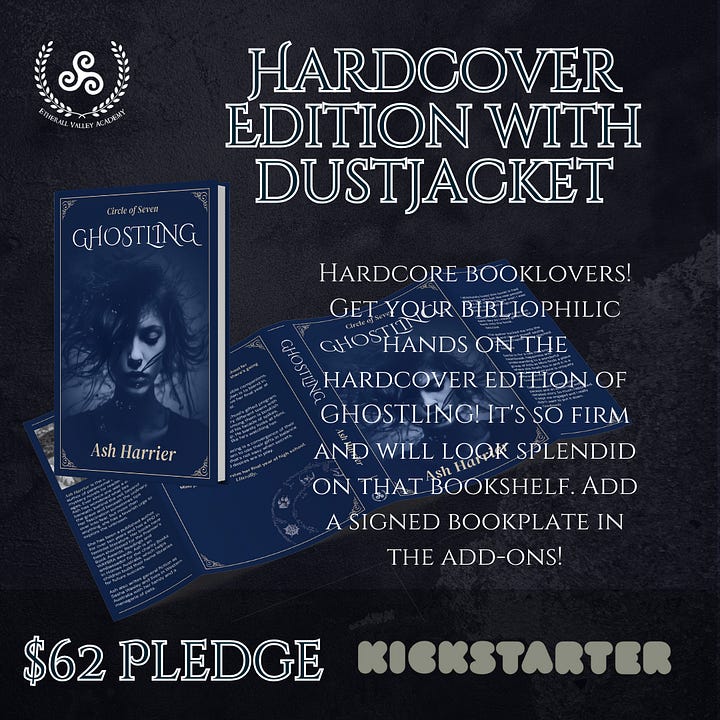
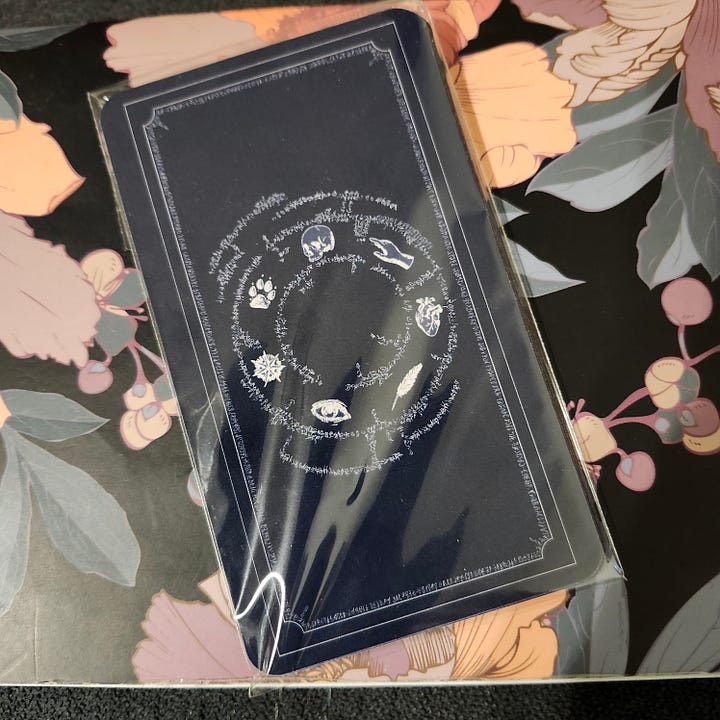
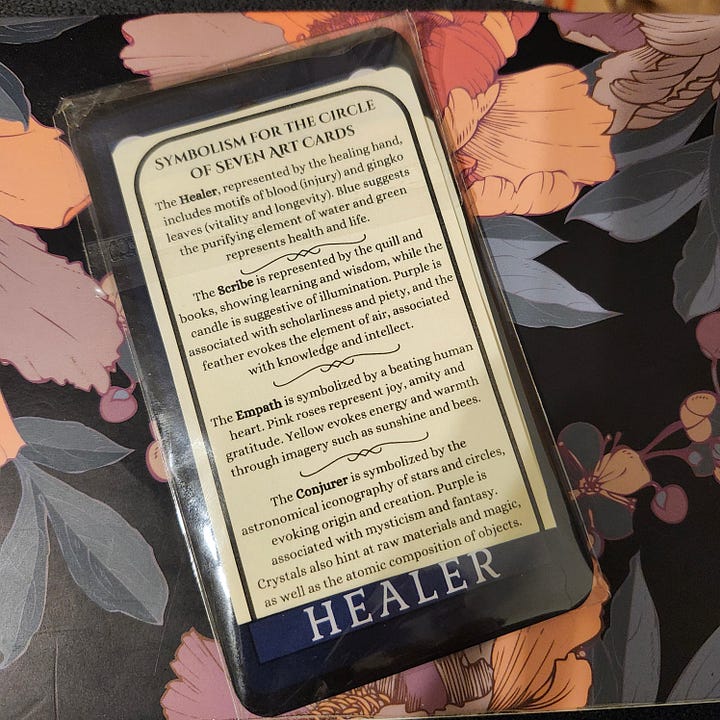
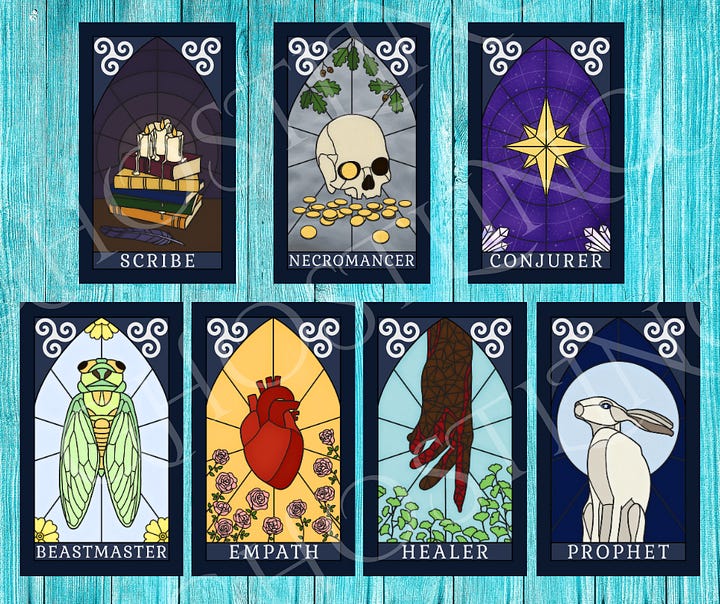
Do you have any tips for writers considering crowdfunding campaigns for their book projects? What did you learn in the process that might change your approach next time?
My two top tips are: join the Kickstarter for Authors Facebook group and spend time in there, reading about others’ experiences. It’s an invaluable resource, especially when it comes to things like estimating shipping costs (because they almost always blow out).
One thing I’m not going to worry about next time is trying to get other Kickstarter creators to share my project. I didn’t find any value in that at all. I’m pretty sure not one person backed my project from another person’s backer group. I will focus on my own platform and trying to reach people within the Kickstarter ecosystem. I’m going to resist the urge to use Meta ads, too. That gets expensive and Meta doesn’t deserve my dollars.
Ghostling, Darkling and Deathling have beautiful covers which are quite different to the originals. The titles have also changed. Was it satisfying after nearly a decade to have another go at these things, and to have full creative control? Can you tell us about the changes you’ve made and why you decided to make them?
YES, so satisfying! The originals (which I loved at the time) feel washed out and dated now, and I really wanted to lean into darkness and danger this time, which I feel has been effectively achieved with these new covers. I agonised over the titles but once I finally settled on Ghostling, the other book titles came easily. They stand out, I think. The best thing was creating a branding ecosystem – a mandala that ties everything together, a mystical school logo, symbolism and colour schemes. I have absolutely loved being involved in the branding process (except for the agonising, which has knobs on it). There were bumps in the road for each cover but I’m so happy with how they turned out.
Did you work with freelance editors, proofreaders, typesetters and cover artists?
Yes. I wanted to work with a professional developmental editor as well as a proofreader to make the books as good as they could be. I used an Australian developmental editor who really helped me tighten the story and tie up loose ends. I used a US-based editor which helped as I’d decided to use American spellings to hit the large US market. I employed two cover designers for book one and blew out the costs a bit, but with books 2 and 3 I’ve kept the cover costs much lower. I also used Fivrr to find a graphic designer to assist with files for my upcoming special edition and I’ve shopped for Canva templates on Etsy. I pay for Book Brush mock up creator, Premium Canva, Book Funnel (ebook delivery service so I can sell ebooks from my own online shop). I did my own typesetting.
That all sounds completely overwhelming to me, but I guess it’s a process of putting one foot in front of the other and doing plenty of research. Which publishing platforms have you released the works through?
My own online webstore.
Ingram Spark (I use this to drop ship my sales through my Kickstarter and online shop).
Draft2Digital – ebook distribution wide to iBooks, Kobo, Fable, and everywhere else.
Amazon KDP for a print and ebook edition sold through Amazon.
Australian printer (Pegasus) for ordering a 100 copies or more for book shops and events.
Distribution includes bookstores across Australia (several independent Dymocks and other indie bookstores).
Amazing, Sasha. Do you have any final thoughts or links to share, or news to watch out for?
This is my Kickstarter profile, and I’m doing a second Kickstarter in September! It will be called Circle of Seven special editions if anyone wants to search for it on Kickstarter. I’m developing beautiful special editions of Ghostling, Darkling and Deathling that feature foiled covers, artwork inside, sprayed edges and endpapers, ribbon bookmarks and other gorgeousness, including a trilogy slipcase. There will also be epic stretch goals and surprises all through the month it is live. It will launch in September 2025 but I’d love for people to follow the project on Kickstarter now so they’ll get notified when it goes live.
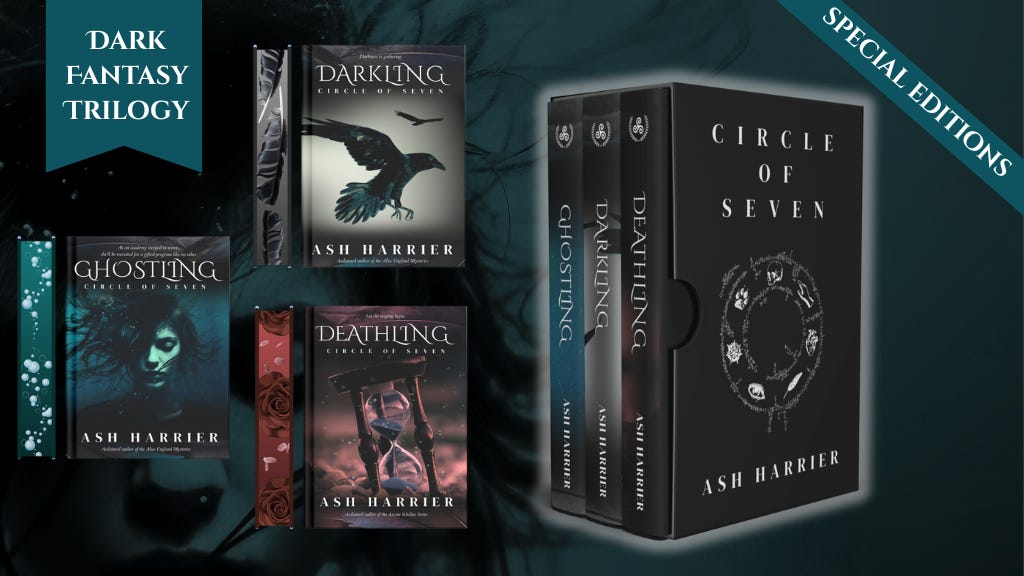
Awesome, Sasha. Thank you so much for sharing your crowdfunded-self-publishing experience with us! I remain impressed.
Thanks for having me xxx
And thanks to everyone else here, for reading The Jam. Register your interest here to be notified when Sasha launches her trilogy Kickstarter campaign in September!
Until next time,
Thanks for reading ‘The Jam with Joanna Morrison’! Subscribe free of charge to receive new posts and support my work.
‘The Jam’ is a newsletter for readers, writers & story-lovers. I’m Joanna Morrison, a writer based in Western Australia. My first novel The Ghost of Gracie Flynn (Fremantle Press, 2022) was shortlisted for the Hungerford Award in 2020. My manuscript ‘The Wanting Dance’ was shortlisted for the Australian Fiction Prize in 2024. Visit my Linktree for links to my website, Instagram, media interviews, reviews, and ways to buy my book. Thanks for joining me!



